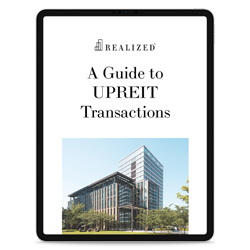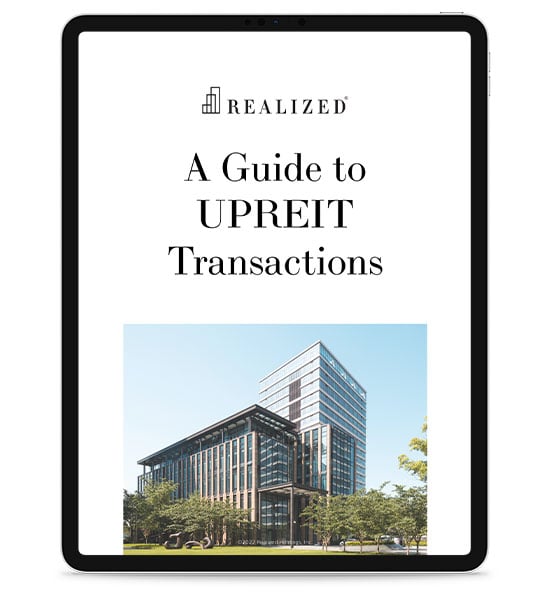
Real estate investment trusts (REITs) can provide investors with access to income-producing real estate and may offer potential diversification within an investment portfolio. However, evaluating a REIT involves careful analysis of various performance and structural factors. One common metric investors consider is the rate of return, which can help compare REIT performance across different sectors and strategies.
Below, Realized 1031 has shared an insightful article on how to calculate the rate of return of REIT, serving as a resource for newbies and experts alike. Keep reading to learn more.
What Is a REIT?
While “trust” is in the name, a REIT is actually a company that owns, operates, manages, and/or finances real estate investment. Typically, there are two types of REITs, namely Equity and Mortgage REIT. In this article, we’ll mostly discuss Equity REITs. Equity REITs own, operate and manage properties which can belong to any property sector, from apartment buildings to commercial spaces, from data centers to healthcare facilities. REITs typically raise funds pooled by investors. In return, the REIT distributes the income from the properties to the investors on a regular basis. This structure allows investors to enjoy passive income and minimal involvement. For example, for individual investors, there’s no need to buy, manage, or finance the property directly.
The IRS has imposed specific criteria to limit what qualifies as REIT. Key requirements include the following.
- The entity must invest at least 75% of total assets in real estate.
- 95% of the income must be derived from income-generating activities of the real estate assets.
- The REIT needs to have at least 100 shareholders for at least 335 days of a 12-month tax year
- The REIT needs to distribute at least 90% of its taxable income to its shareholders as dividends.
Key Ways To Analyze a REIT
Real estate investment trusts (REITs) are evaluated differently from traditional equities due to their structure and accounting treatment. Standard earnings measures like earnings per share (EPS) can be misleading due to heavy non-cash expenses like depreciation.
Two commonly used metrics in REIT analysis include Funds From Operations (FFO) and dividend yield to assess the rate of return. Funds From Operations (FFO) adjusts net income by adding back depreciation and amortization, which are non-cash charges. FFO is widely used as an industry standard to better reflect the cash-generating ability of a REIT’s real estate operations.
Meanwhile, the dividend yield, calculated as annual dividends divided by current share price, shows the income return distribution relative to market value.. Together, FFO and dividend yield are frequently used to evaluate the operating performance and distribution characteristics of a REIT. However, like all financial metrics, they should be considered alongside other factors such as leverage, occupancy rates, portfolio diversification, and market outlook.
Funds From Operations
Funds From Operations (FFO) refers to the amount of cash a REIT generates from the ongoing operations of its real estate portfolio. FFO is commonly used in REIT analysis because it adjusts for accounting items that may not reflect actual cash flow, offering a more practical perspective than net income alone.
FFO adds back non-cash expenses like depreciation and amortization to net income, and typically subtracts gains from property sales. These adjustments help isolate recurring income from the REIT’s core activities, excluding the effects of one-time transactions or accounting conventions.
FFO Formula
FFO = Net Income + Depreciation and Amortization-Gains on Sales of Real Estate
This adjustment is important because under Generally Accepted Accounting Principles (GAAP), real estate assets are depreciated over time—even if they appreciate in market value. As a result, net income may understate the REIT’s actual operating performance.
What is a good FFO, then? Investors must look at data from across multiple periods to determine if the FFO is growing, diminishing, or remaining stagnant. A consistent or growing FFO may indicate operational stability or portfolio expansion. However, FFO is just one of several factors to consider, and it does not guarantee future dividend levels or total return.
Example Calculation
A REIT reported the following figures for the year.
- Net Income: $5,000,000
- Depreciation: $2,500,000
- Amortization: $500,000
- Loss on Property Sale: $200,000 (not included in standard FFO)
- Gains on Sales of Property: $0
- Interest Income: $0
Using our formula, we can get the FFO for that year.
FFO = ($5,000,000 + $2,500,000 + $500,000 + $200,000) – $0 – $0
FFO = $8,000,000
In this example, $8 million represents the REIT’s FFO for the year—commonly used by investors to evaluate operating performance, compare REITs of similar size, or analyze year-over-year trends. Note: While this example includes a property sale loss, FFO typically excludes both gains and losses from such transactions to focus on recurring operations.
Yield From Dividends
Another metric commonly used to evaluate REIT performance is the yield from dividends. Represented as a percentage, this number shows how much you’re earning from the dividends compared to the purchase price of each REIT share. For example, if a REIT pays $2.00 per share annually and the stock trades at $40.00, the dividend yield is 5%.
To find the yield from dividends, follow this formula.
Dividend Yield = (Annual Dividends per Share/Share Price) * 100
What do the numbers mean? Dividend yield reflects current income potential, but it does not account for changes in the share price or the sustainability of distributions over time. A high dividend yield could result from a declining share price or may reflect a REIT with an aggressive payout strategy. Conversely, a lower yield doesn’t necessarily indicate poor performance—it could reflect a higher share price or more conservative income distribution.
When evaluating dividend yield, investors often compare it alongside other metrics—such as FFO, payout ratios, and historical dividend trends—to form a more complete picture of the REIT’s income strategy and risk profile.
Other Return Considerations to Keep in Mind
Going beyond FFO and dividend yield may influence a REIT’s long-term performance and investor returns. Here are other considerations to keep in mind when calculating returns.
90% Dividend Rule
As we mentioned above, the IRS requires REITs to distribute at least 90% of their income to all shareholders. While this supports regular dividend payments, it also means REITs retain little for reinvestment. As such, many REITs rely on debt or issuing new shares to fund growth, which can impact long-term returns and valuation.
Depreciation Distortion
Under GAAP, REITs depreciate real estate assets over time—even though market values may actually appreciate.
Occupancy Rates and Lease Terms
A significant portion of a REIT’s income comes from rental payments. As such, any instability in occupancy levels can affect the rate of returns. Expiring leases can also cause similar challenges. It’s important for you to review the stability of the REIT's portfolio and tenant diversification when evaluating returns to gain a more comprehensive idea on the REIT’s profitability.
Wrapping Up: Analyzing REITs
Knowing a REIT’s FFO and Dividend Yield helps investors evaluate their investment choices within the REIT space. This will lead to quantitative insights that can lead to more informed decisions. That said, no single metric tells the whole story. Investors should consider multiple factors—such as debt levels, occupancy trends, lease structures, and sector diversification—when reviewing REIT opportunities. Aligning these factors with individual financial goals, risk tolerance, and investment timelines is essential.
The tax and estate planning information offered by the advisor is general in nature. It is provided for informational purposes only and should not be construed as legal or tax advice. Always consult an attorney or tax professional regarding your specific legal or tax situation.
Article written by: Story Amplify. Story Amplify is a marketing agency that offers services such as copywriting across industries, including financial services, real estate investment services, and miscellaneous small businesses.
Sources:



